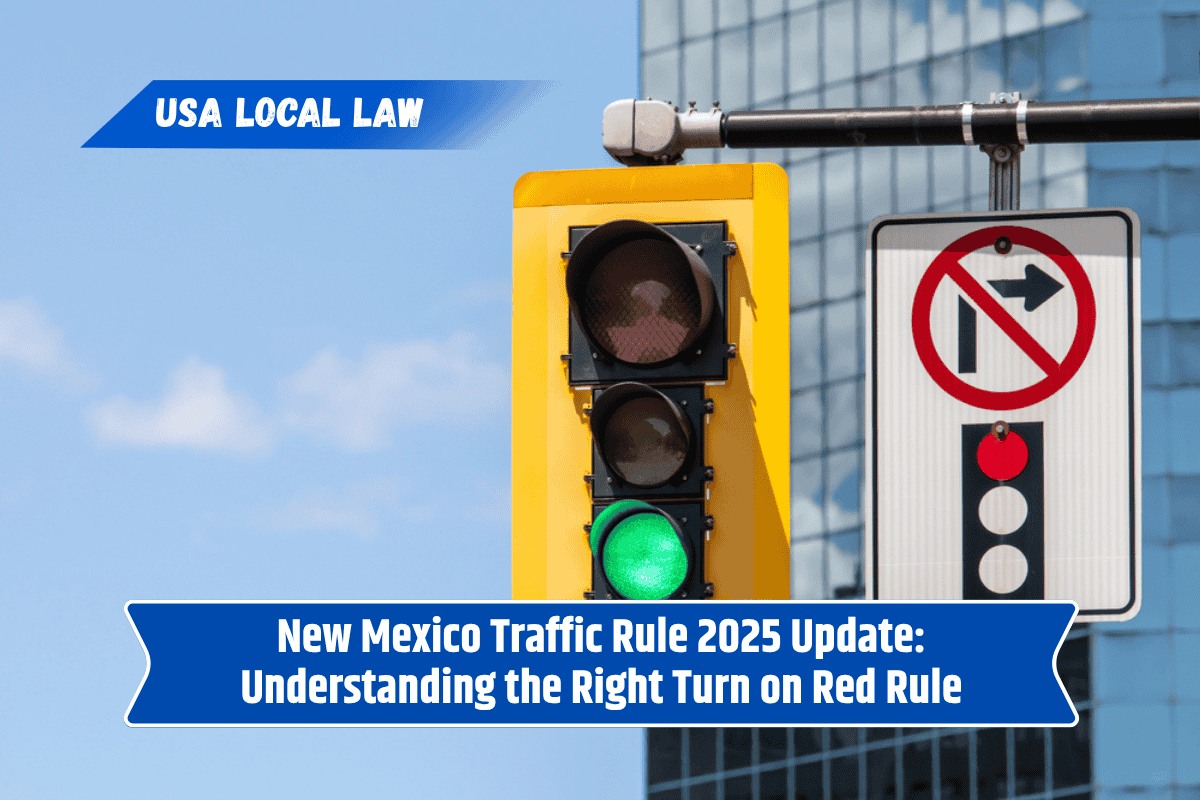In 2025, New Mexico hasn’t changed its rule for drivers regarding right turns on red traffic lights. You still need to make a full stop before turning and ensure it’s safe.
What is new, though, affects cyclists: starting July 1, 2025, they can treat red lights and stop signs differently under a law called the “Idaho stop”. This helps cyclists move more safely through intersections.
What Does the “Right Turn on Red” Rule Mean?
New Mexico law allows drivers to turn right at a red light if no sign prohibits it. However, drivers must:
Come to a complete stop before the crosswalk.
Yield to pedestrians and other traffic.
This has been the law for years.
Why the Rule Exists
This rule helps traffic flow more smoothly and saves fuel. But safety precautions keep it from being dangerous—drivers must stop and yield first .
What’s New for Cyclists in 2025
Effective July 1, 2025, under Senate Bill 73, New Mexico allows cyclists to perform an “Idaho stop”:
At red lights: they can stop fully then proceed if it’s safe.
At stop signs: they can treat them like yield signs and roll through when clear.
This change recognizes common cyclist behavior and aims to reduce crashes at intersections.
Safety Benefits of the Idaho Stop
Studies show cycling injuries dropped by about 14.5% in Idaho after the rule took effect. It helps bikers avoid staying in drivers’ blind spots.
Who Can Turn on Red? Summary
| Road User | Right Turn on Red Rule | Idaho Stop (2025) |
|---|---|---|
| Drivers | Stop, yield, then turn (no changes) | Not applicable |
| Cyclists | Same as drivers before 2025 | Start July 1: allowed to treat reds/stops flexibly |
Things to Keep in Mind
Drivers should continue to fully stop and yield before turning right on red.
Cyclists, from July 1, 2025 onward, must still stop and check safety before proceeding.
Local signs may prevent right turns or cyclist “Idaho stops” at specific intersections.
In 2025, New Mexico kept the right-turn-on-red rule for drivers the same—make a full stop, then turn if safe. But for cyclists, July 1 brings a helpful update: they’re allowed to treat red lights and stop signs more like yield signs under the Idaho stop. The goal is better safety and smoother traffic at intersections.
